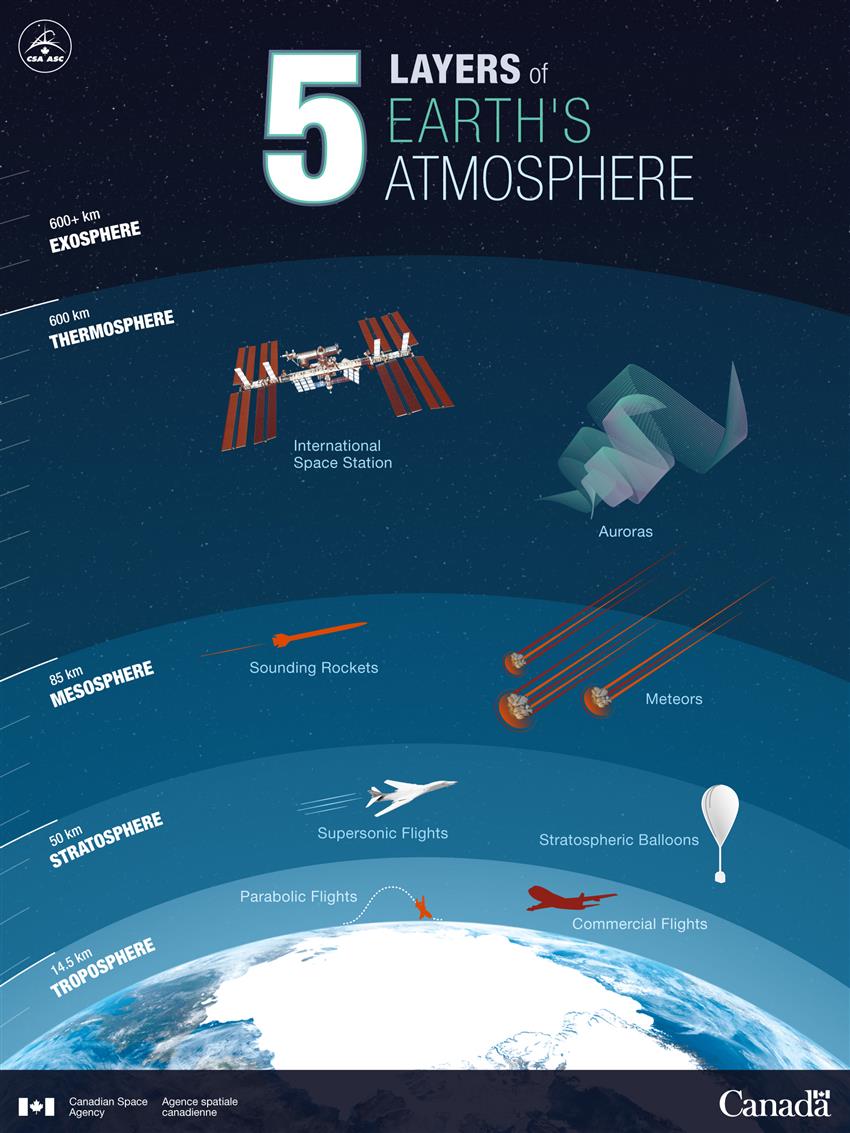About stratospheric balloons
On this page
What is a stratospheric balloon?
Stratospheric balloons are high-altitude balloons that are released into the stratosphere. They are the only type of balloons that can be operated in this region of the atmosphere (15 to 45 km in altitude), which is too low for satellites, too high for aircraft and cleared too quickly by rockets. The Canadian Space Agency (CSA) uses stratospheric balloons to test and validate new technologies developed for long-duration space missions and to perform scientific experiments in an environment similar to space.
Stratospheric balloons are typically made out of ultra-thin plastic filled with helium and can stretch into a gigantic upside-down "teardrop" shape more than half as tall as the CN Tower, or about the height of the Eiffel Tower. They are equipped with several gondolas suspended on the flight chain. The gondolas can carry science, astronomy, atmospheric chemistry, weather forecasting and technological demonstration payloads weighing up to 1.1 tons altogether.
These balloons require no engine and no fuel and are fully recovered after each flight. They can reach altitudes of up to 42 km, holding their instrument packages aloft for several hours. Some balloons can even conduct long-duration flights, lasting days, weeks and even months.
Stratospheric balloons are a platform of choice for scientists and engineers, as they can be used to test and advance space science for far less than the cost of a satellite (up to 40 times less) and provide an opportunity to carry out concrete scientific experiments in a short period of time and obtain results quickly.

Text version of balloon's maximum payload capacity infographic
Balloon's maximum payload capacity: 1.1 ton
Credit: CSA

Text version of comparison between the CN Tower and a stratospheric balloon infographic
- CN Tower 553 m
- Stratospheric balloon
- Top part: 20 to 180 m
- Bottom part: 100 to 150 m
Credit: CSA
Anatomy of a balloon
How high can stratospheric balloons fly?
Five layers of the Earth's atmosphere
Exosphere
Altitude: 600 km
Thermosphere
Altitude: from 85 to 600 km
- International Space Station: Altitude: +/- 400 km
- Auroras: Altitude: +/- 100 km
Mesosphere
Altitude: from 50 to 85 km
- Sounding rockets
- Meteors
Stratosphere
Altitude: from 14.5 to 50 km
- Supersonic flights
- Stratospheric balloons: from 35 to 42 km
Troposphere
Altitude: ground to 14.5 km
- Parabolic flights: 8.5 km
- Commercial flights: from 10 to 12 km
Contact
Should you have any questions regarding the STRATOS program, please contact us at stratos_administration@asc-csa.gc.ca.










